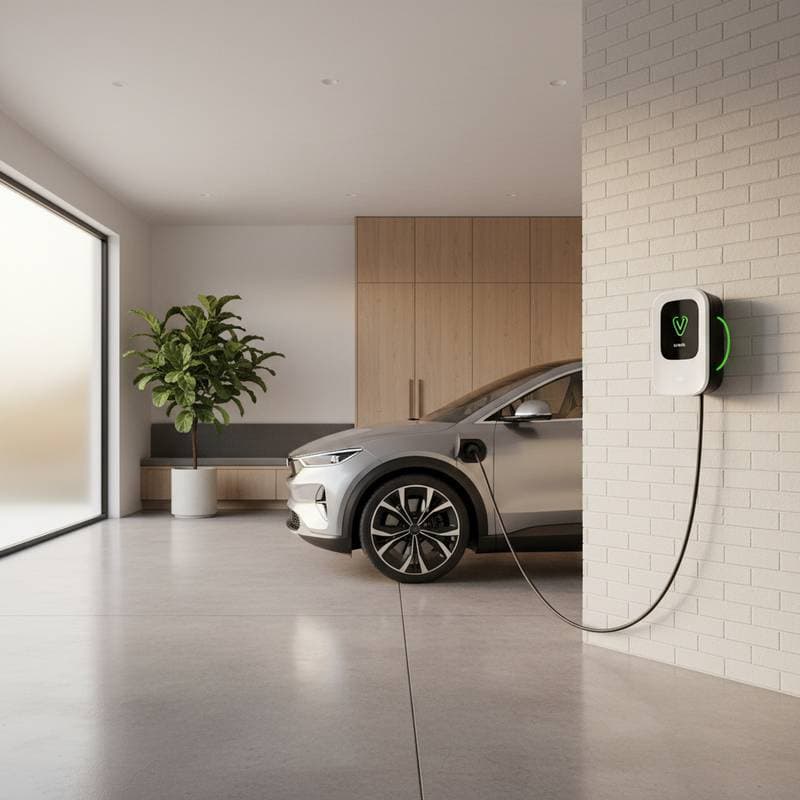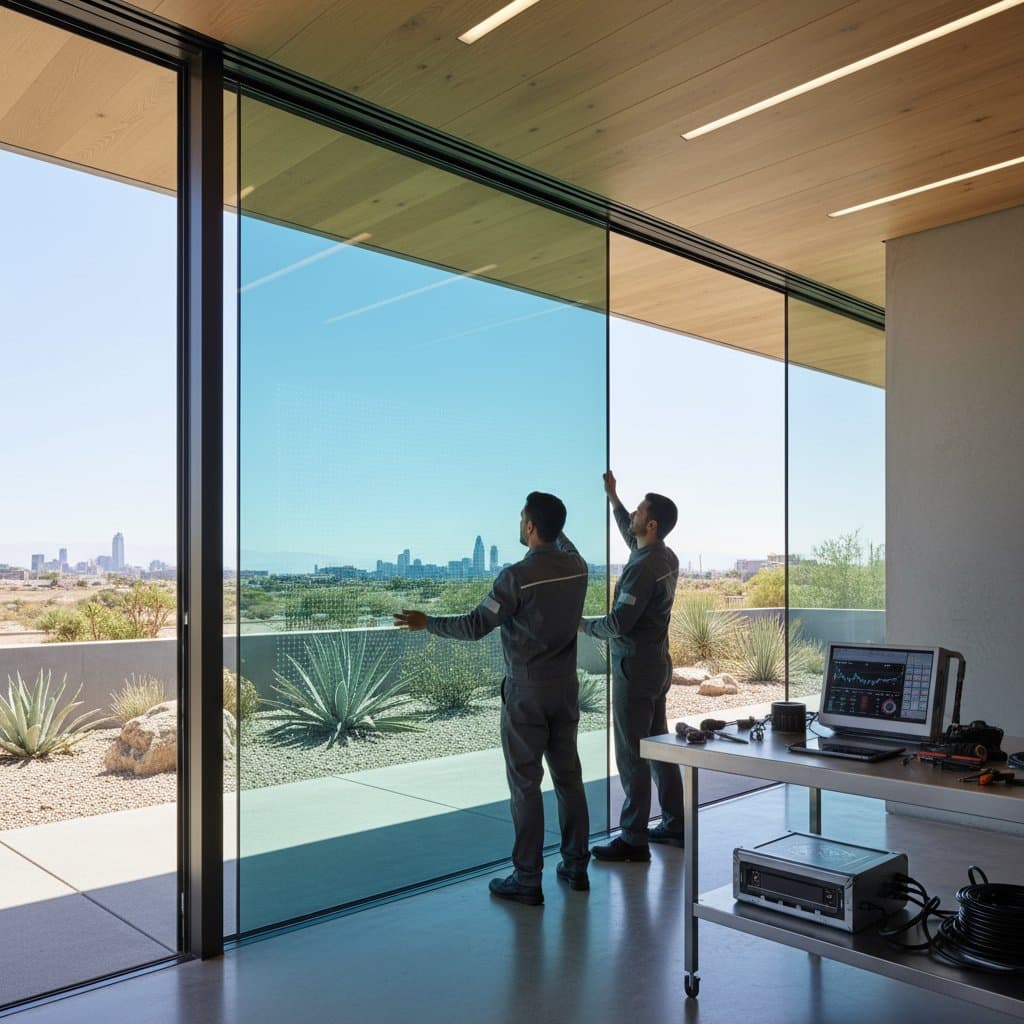Installing Home EV Charging Stations Yields 92% ROI
Typical installed cost: $1,200 to $2,800. Projected return on investment: approximately 92%.
Home installation of an electric vehicle charging station stands out among sustainable home improvements because it recoups nearly the full investment. Prospective buyers prioritize properties equipped for EV charging, while current owners reduce expenses on public stations. The financial benefits accumulate as electricity replaces gasoline for daily travel.
Key Factors Influencing Installation Costs
Multiple elements determine the total expense of a home EV charging setup. Awareness of these components helps maintain budget control and prevents unexpected charges during the process.
Charger Level
- Level 1 (120V) connects to a standard household outlet and provides slow charging speeds. This option incurs little to no additional cost if an outlet exists near the parking area.
- Level 2 (240V) requires a dedicated circuit and achieves charging rates four to six times faster than Level 1. Equipment for this level ranges from $500 to $1,200.
- DC fast chargers suit commercial applications and demand excessive power for residential use.
Electrical Panel Capacity
A panel with sufficient capacity for a new 240V circuit minimizes labor requirements. If capacity falls short, a panel upgrade costs $800 to $2,000. An electrician should evaluate available amperage prior to charger purchase.
Distance to Parking Area
Longer runs for conduit and cabling elevate expenses. For instance, a 10-foot extension might add $100, whereas a 50-foot run could increase costs by $400 or more.
Permits and Inspections
Local regulations often mandate electrical permits, with fees between $100 and $250. Certain utility providers offer reimbursements for these costs.
Mounting and Protective Features
Wall mounting represents the standard approach. Pedestal installations or weather-resistant enclosures add $200 to $400. Protective covers or overhangs enhance durability against environmental exposure.
Disposal and Surface Repairs
Cutting into drywall or trenching concrete necessitates repairs costing $150 to $600. Positioning conduit visibly simplifies future inspections and maintenance.
DIY Options Versus Professional Installation
Electrical installations adhere to rigorous safety standards. Errors risk insurance invalidation or fire dangers.
Tasks Suitable for DIY
- Secure the mounting bracket to the wall.
- Install empty conduit for later wiring by a professional.
- Prepare the parking surface and label relevant circuits.
Situations Requiring Professional Expertise
- Installation of a new circuit or breaker.
- Presence of aluminum wiring or outdated fuse panels.
- Necessity for panel upgrades or outdoor wiring trenches.
Required Skills and Tools
Professionals employ torque wrenches, voltage testers, conduit benders, and compliance manuals. DIY participants need basic implements such as drills, levels, and stud finders.
Associated Risks
Wiring active circuits poses significant hazards. Professionals shut off the main power supply, confirm with testing devices, and use insulated gloves during examinations.
Ongoing Maintenance and Warranty Information
Routine Maintenance Procedures
- Clean the charger exterior and cable weekly to eliminate dust buildup.
- Ensure plug connections remain dry and protected during idle periods.
- Examine the cable for damage monthly.
Frequent Issues
- Wall plugs loosen from repeated cable pulls.
- Outdoor connectors suffer corrosion.
- Smart chargers experience software delays with unreliable Wi-Fi.
Preventive Measures
Position the charger to allow free cable hanging. Provide shade for the installation site when feasible. Perform firmware updates quarterly via the companion application.
Warranty Details
Charger units typically include three to five years of parts coverage. Labor warranties prove uncommon, so retain installation receipts and photographs for potential claims.
Strategies to Prolong Service Life
- Shield from direct rain or intense sunlight.
- Install surge protectors in regions prone to power interruptions.
- Promptly replace any damaged cables.
Detailed Breakdown of Cost Components
| Component | Low-End | High-End | Notes |
|---|---|---|---|
| Charger Unit | $400 | $1,200 | Smart features increase the price |
| Labor | $300 | $900 | Varies by circuit length and panel configuration |
| Permit & Inspection | $100 | $250 | Rebates from utilities can reduce this |
| Panel Upgrade | $800 | $2,000 | Essential for insufficient amperage |
| Mounting & Materials | $150 | $450 | Covers conduit, fittings, and anchors |
Overall Typical Cost: $1,200 to $2,800.
For older residences with non-compliant wiring, allocate an additional 10 to 15 percent.
Tiered Options for EV Chargers
| Tier | Description | Cost | Lifespan | Upkeep |
|---|---|---|---|---|
| Good | Level 1 using existing outlet | $0 to $200 | 10 years | Minimal |
| Better | Standard Level 2 wall-mounted unit | $1,200 average | 12 years | Moderate |
| Best | Smart Level 2 with load balancing | $2,500 average | 15 years | Moderate |
Opt for the smart load management model as the primary upgrade. This feature avoids circuit overloads during simultaneous use of power-intensive appliances.
Steps to Implement Your EV Charging Setup
Begin the planning process immediately to realize benefits sooner.
-
Evaluate Electrical Panel Capacity
Verify the main breaker rating. Homes with 100-amp service generally support a single Level 2 charger, provided other high-power devices do not operate concurrently. -
Obtain Multiple Quotes
Secure at least two detailed estimates from licensed electricians. Inquire about permit management, rebate applications, and inspection coordination. -
Pursue Available Rebates
Utilities and local governments often provide incentives with limited enrollment periods. Prepare details on the charger model and installer in advance. -
Time the Installation Wisely
Arrange during favorable weather conditions. Steer clear of high-demand seasons overlapping with heating or cooling system installations.
Realizing Long-Term Value from Your Investment
A home EV charging station not only offsets initial costs through a strong ROI but also positions your property as forward-thinking in a growing electric mobility landscape. Energy savings compound over time, and the convenience of overnight charging enhances daily routines. This upgrade aligns with broader sustainability goals while delivering practical financial returns.










